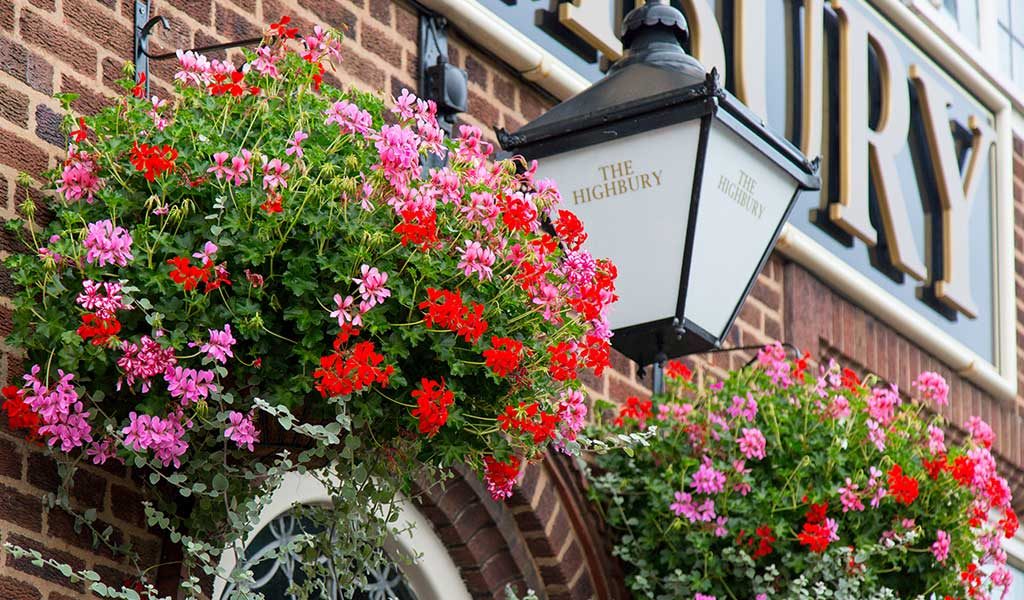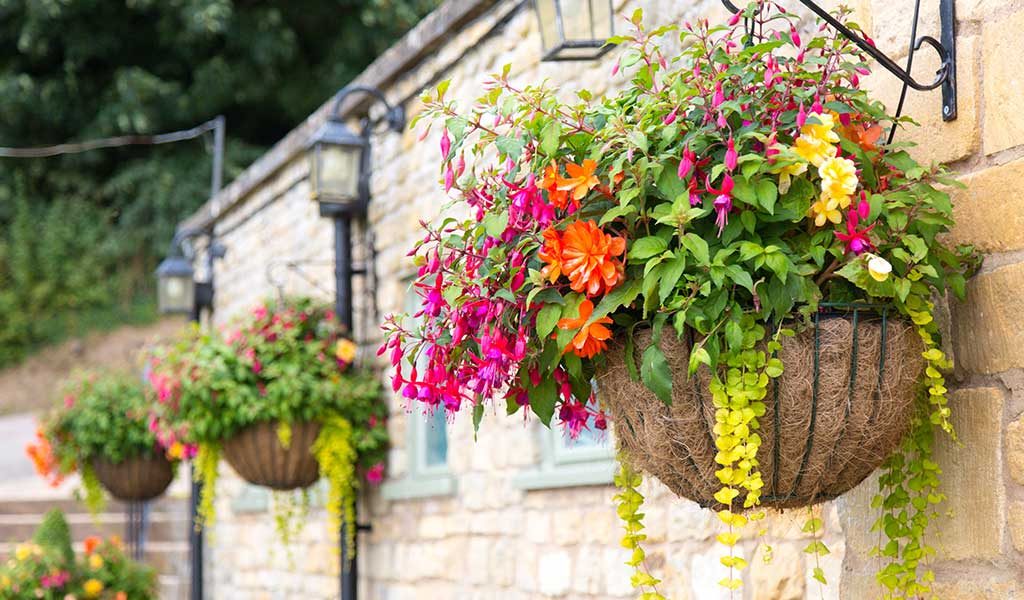 Ask Chris Brown from Browns Nurseries
Ask Chris Brown from Browns Nurseries
Q. Could you recommend some plants for summer hanging baskets and patio planters, please? Also, do you have any tips for looking after them?
A. These days, the choice of plants is fantastic, as most plants I am about to mention come in a wide variety of colours and shades. When people ask for hot colours in a basket, we use reds, orange, and yellow in our planting. For softer tones, we prefer pinks, blues, and white, all in light shades.
Let’s start at the bottom of the hanging basket: place a circle of moss, about the size of a saucer, at the bottom of the basket, then add some compost so you have a level surface. The plants for this layer can include trailing verbena, calibrachoa ‘Million Bells’, bidens, lobelia, helichrysum silver, scaevola, and surfina.
By placing moss up the sides of the basket, about three more inches, then adding compost to that level, you can next place diasica, sanvitalia, nemesia ‘nuvo’, bedding bergonias, verbena, and phlox. Then move up another layer with more moss and compost, again by about three inches.
The top-side layer of your basket could include short trailing plants, brachyscome, centradenia, Felicia, helichrysum gold, marigold ‘French’ bergonia, and impatiens. Then add moss to the very top edge of the basket and fill with compost to the top. This is my favourite layer as it is the same for all out baskets, as well as for our planters.
Start with a fuchsia in the centre, then place three geraniums in a triangle around the fuchsia. The next triangle working outwards could include salvia, African marigolds, dianthus and cineraria. Around the edge of the basket or planter you could use trailing geraniums, trailing fuschia, bacopa, lysimachia, trailing bergonias, trailing verbena, and million bells. If you have any space left, use bedding bergonias as fillers.
Use good quality compost and add a slow-release fertilizer. Water every day in hot weather, and then every other day when it’s cooler. The basket or planter should flower until the first frost of winter.

Q: I have a Viburnum Tinus ‘Eve Price’ and every year something eats holes in the leaves, making it look unsightly. Is there anything I can do to stop this happening?
A: Sounds like this damage is being caused by the Viburnum Beetle. The symptoms are irregular holes that are eaten out of the leaves of native Viburnum, Viburnum Opulus, and Viburnum Lantana. The worst to be effected in Viburnum Tinus as this variety is evergreen.
Holes are eaten between the main veins and the remaining tissues turn brown. The eggs of the beetle overwinter in cracks on young stems and hatch in mid-May, producing creamy-yellow larvae with black markings. They feed on leaves in May to June and grow to a length of about 7mm before going to the soil to pupate, which is generally a month after hatching.
Adult beetles emerge from the pupal cells in the ground during July and August and also feed on the leaves before laying eggs at the tips of year-old shoots. Each female lays about 200-300 eggs.
It’s important to look out for the first signs of damage in May to June and then spray with a contact insecticide to kill the young larvae. Repeat after a week or so, if necessary. You can rejuvenate eaten plants by cutting back hard, as this will bring a fresh flush of new growth. Also feed well with a good fertiliser or Blood, Fish & Bone.
Hope this helps!











Add a comment